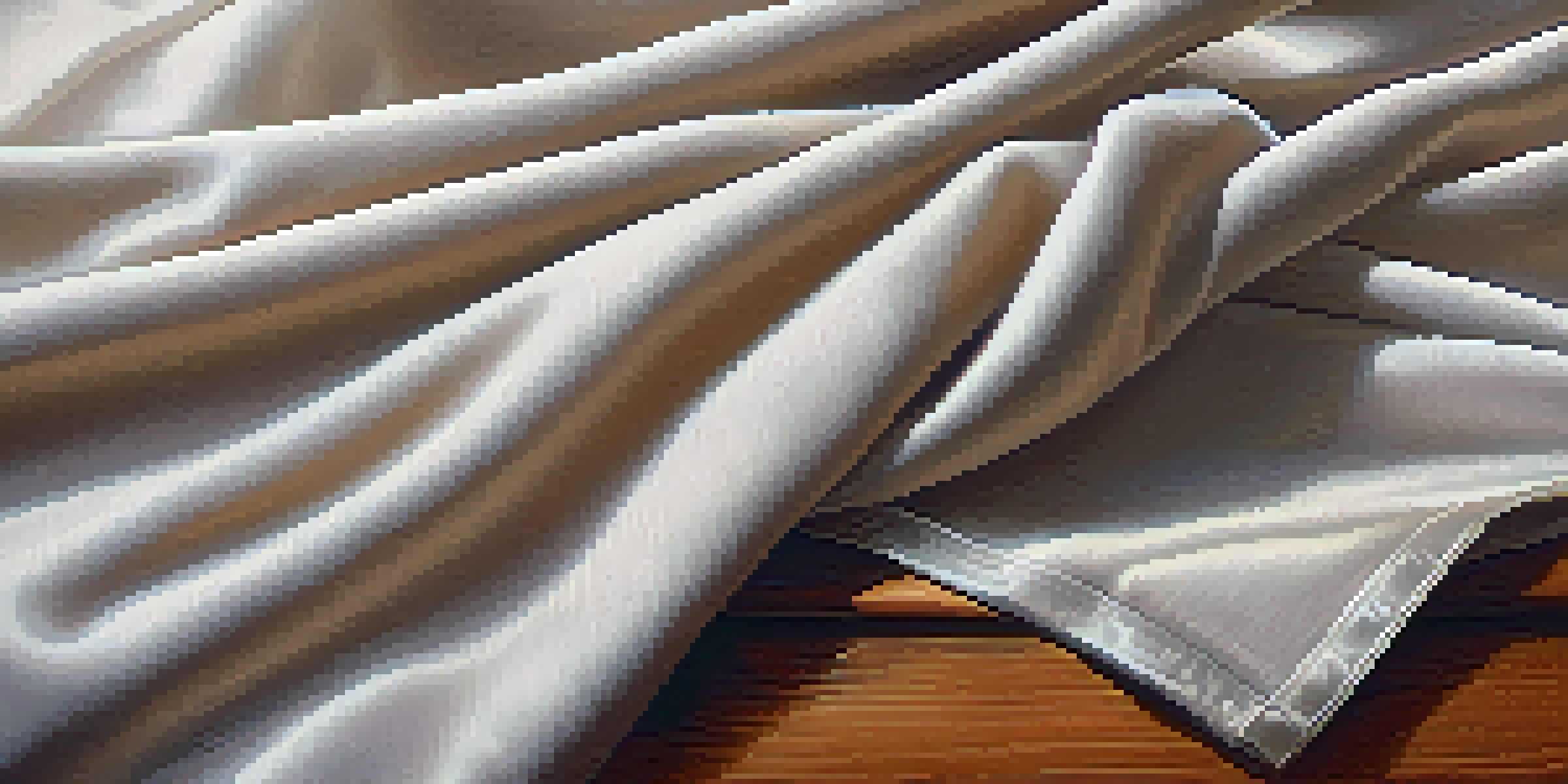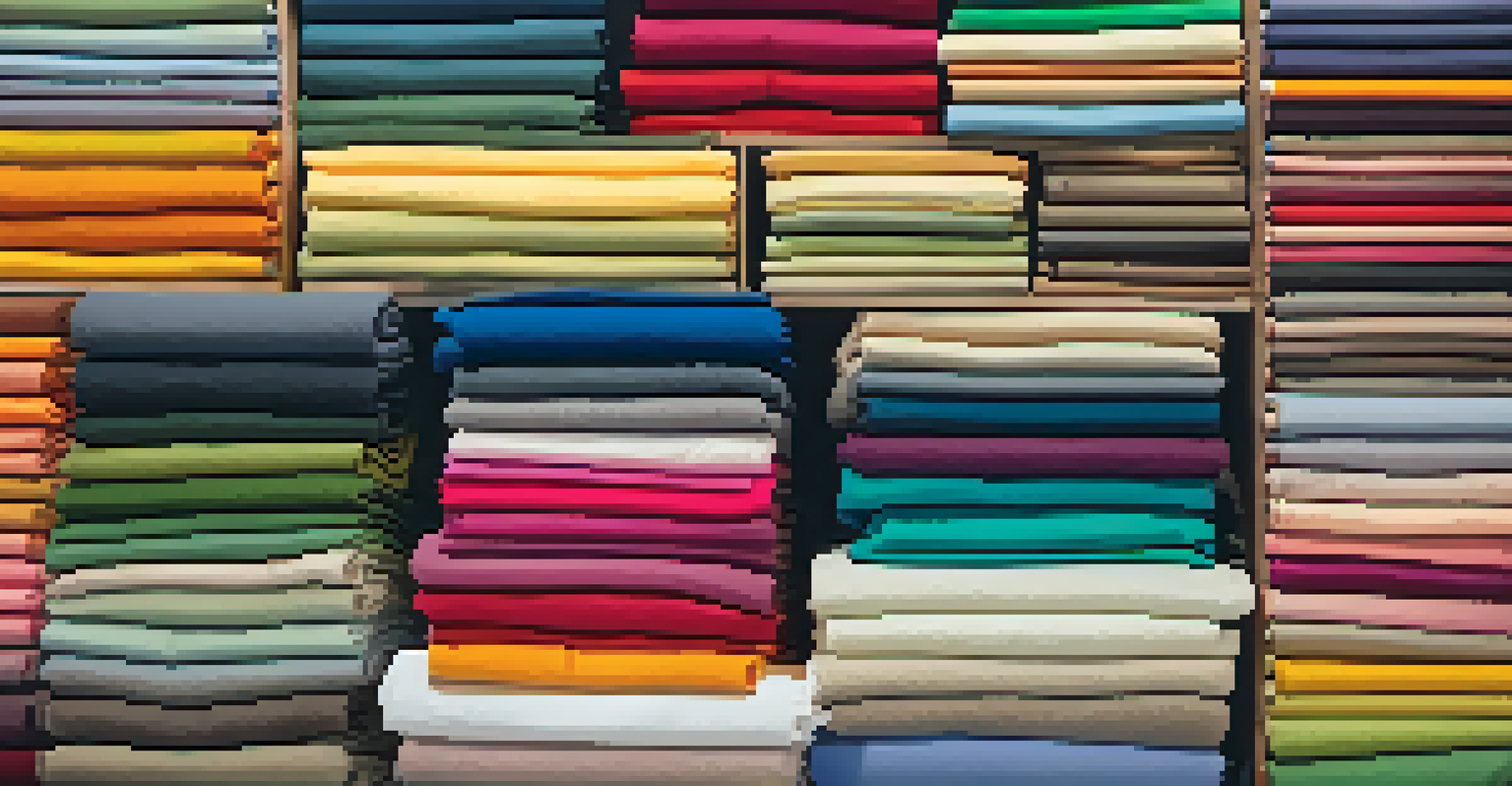Biodegradable Fabrics: The Future of Sustainable Fashion

Understanding Biodegradable Fabrics and Their Importance
Biodegradable fabrics are materials designed to break down naturally over time, reducing waste in landfills. This is crucial in the fashion industry, which is known for its significant environmental impact. Unlike traditional fabrics, which can take decades to decompose, biodegradable options offer a sustainable alternative that aligns with eco-conscious consumer values.
Fashion is the armor to survive the reality of everyday life.
These fabrics can be made from organic materials like cotton, linen, or innovative fibers such as Tencel and hemp. This shift not only helps the environment but also supports ethical practices in the textile industry. By choosing biodegradable fabrics, consumers contribute to a circular economy, where materials are reused and replenished rather than discarded.
As awareness of fast fashion's downsides grows, biodegradable fabrics provide a solution that appeals to both consumers and brands. They represent a step toward a more sustainable future, encouraging the fashion industry to rethink its production methods and materials.
The Role of Technology in Developing Biodegradable Fabrics
Advancements in technology have played a significant role in the creation of biodegradable fabrics. Innovative techniques allow scientists and designers to develop materials that not only look good but also decompose quickly and safely. For instance, researchers are experimenting with bio-based polymers that mimic the properties of traditional textiles while being environmentally friendly.

Moreover, technology aids in the production process, making it less resource-intensive. This means brands can create biodegradable fabrics with a lower carbon footprint, aligning with the principles of sustainable fashion. By leveraging technology, the industry can meet the growing demand for eco-friendly products without compromising on quality or style.
Biodegradable Fabrics Reduce Waste
These materials break down naturally, offering a sustainable alternative to traditional fabrics and helping to minimize landfill waste.
As these technologies evolve, we can expect to see even more exciting developments in biodegradable fabrics. From enhanced durability to various textures and patterns, the future looks bright for sustainable fashion driven by innovation.
Popular Biodegradable Fabrics in the Fashion Industry
Several biodegradable fabrics have gained popularity in the fashion industry, each with its unique properties. Organic cotton, for instance, is a staple, known for its softness and breathability. It’s grown without synthetic pesticides or fertilizers, making it a favorite among eco-conscious brands and consumers alike.
Sustainability is no longer about doing less harm. It's about doing more good.
Another exciting option is Tencel, made from sustainably sourced wood pulp. This fabric is not only biodegradable but also produced in a closed-loop process, minimizing waste and water usage. Its silky texture and moisture-wicking properties make it ideal for various clothing types, from activewear to formal attire.
Hemp is another strong contender, celebrated for its durability and low environmental impact. It requires minimal water and no pesticides to grow, making it a highly sustainable choice. As more designers adopt these fabrics, we can anticipate a shift toward more environmentally friendly collections in mainstream fashion.
Consumer Demand for Sustainable Fashion Solutions
Consumer demand for sustainable fashion has skyrocketed in recent years, prompting brands to take notice. Shoppers are becoming increasingly aware of the environmental consequences of their purchases, leading to a shift in buying habits. This change is pushing brands to explore biodegradable fabrics as a viable alternative to traditional materials.
Social media and influencer culture have also played a pivotal role in this shift. Consumers are more informed than ever, sharing insights about sustainable practices and encouraging brands to adopt eco-friendly approaches. This growing community of conscious shoppers is shaping the industry, urging companies to prioritize sustainability.
Tech Advances Boost Eco-Friendly Fabrics
Innovative technologies are enabling the development of biodegradable fabrics that are both stylish and environmentally friendly.
As a result, brands that offer biodegradable fabrics often enjoy a competitive edge in the market. By aligning with consumer values, they can foster brand loyalty and attract new customers who prioritize ethical choices in their fashion purchases.
Challenges Facing the Adoption of Biodegradable Fabrics
Despite the promise of biodegradable fabrics, there are challenges to their widespread adoption. One primary concern is the cost of production, which can be higher than conventional fabrics. This often leads brands to hesitate in switching to eco-friendly options, fearing it could impact their pricing and competitiveness.
Additionally, there is a need for greater awareness and education about biodegradable fabrics among consumers. Many people remain unaware of the benefits and availability of these materials, which can hinder demand. Brands must invest in marketing strategies that highlight the environmental advantages of biodegradable options.
Lastly, the fashion industry is often driven by trends, and biodegradable fabrics need to establish themselves as a fashionable choice. By collaborating with designers and influencers, brands can showcase the aesthetic appeal and versatility of biodegradable fabrics, encouraging more widespread acceptance.
The Future of Biodegradable Fabrics in Sustainable Fashion
The future of biodegradable fabrics looks promising as more brands and consumers embrace sustainability. As technology continues to evolve, we can expect to see even more innovative materials that are not only eco-friendly but also stylish and functional. This evolution will likely lead to a broader range of options for consumers, making it easier to choose sustainable fashion.
Moreover, as regulations around waste and sustainability tighten, brands will be compelled to adopt biodegradable materials. This shift is not just a trend; it's becoming a necessity in order to comply with environmental standards. Companies that proactively embrace this change will likely lead the way in the fashion industry.
Consumer Demand Drives Sustainable Choices
Growing awareness among consumers about environmental impact is pushing brands to adopt biodegradable fabrics and prioritize sustainability.
In essence, biodegradable fabrics are poised to become a cornerstone of sustainable fashion. By prioritizing these materials, the industry can make significant strides toward reducing its environmental impact and fostering a more responsible approach to clothing production.
How to Choose Biodegradable Fabrics for Your Wardrobe
Choosing biodegradable fabrics for your wardrobe doesn't have to be complicated. Start by looking for labels that indicate the material is organic or made from sustainable resources. Fabrics like organic cotton, Tencel, and linen are excellent choices that are both stylish and eco-friendly.
Additionally, consider the brand's commitment to sustainability. Research companies that prioritize ethical practices and transparency in their production processes. Many brands will proudly showcase their eco-friendly initiatives, making it easier for you to make informed choices.

Lastly, don't shy away from asking questions. Reach out to brands directly or check their websites for more information about their materials. By being an informed consumer, you can actively contribute to the demand for biodegradable fabrics and support a more sustainable fashion industry.